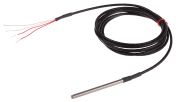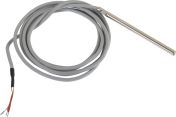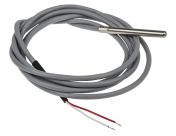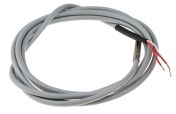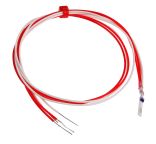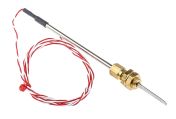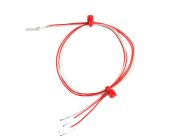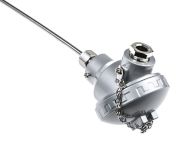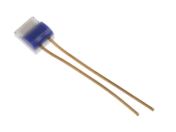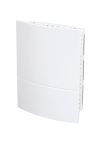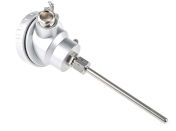RTD Sensors
What are RTD Sensors?
Resistance Temperature Detectors or RTDs are used to sense varying temperature ranges and levels of resistance in industrial and commercial applications. An RTD consists of a resistance element and insulated copper wires.
The resistive element is usually made of platinum, nickel, nickel-iron, or copper as these materials are have high accuracy, fast response time, and a wide temperature range. The main function of an RTD is to probe increases and decreases in temperature and control them accordingly.
How do RTD Sensors work?
RTDs use a sensor to detect changes in temperature. The metal component or RTD resistor is situated in proximity to where the temperature measurement needs to occur. As the electrical current passes through the metal, the resistance element measures the electrical current being passed through it. When the temperature of the metal increases, the RTD increases the electrical resistance, which is measured in Ohms.
The resistance value can be converted into temperature and the resistance ratio can vary based on the element used for the resistor. The flow of electricity is then decreased, subsequently reducing the temperature.
Types of RTD Sensors
The most common type of RTD is a pt100. A PT100 sensor is typically the most accurate temperature sensor with high levels of stability and repeatability. The Pt100 is a laboratory-grade sensor as it is IEC 60751 compliant.
Pt1000's are also available at similar temperature ranges and tolerances, however, a pt1000 will have a resistance value reading ten times higher than the pt100 for the same temperature. Two, three and four wire sensors are used in RTD sensing circuits.
RTD circuits are configured so the sensor's resistance can be accurately calculated. The lead wire used between the resistance element and measuring element also has it's own resistance, so two, three, and four-wire sensors provide a means of compensating errors in temperature and resistance measurement.
Benefits of using RS RTD Sensors
- Accurate
- Temperature Measurement
- High Temperature Ranges
- Improved Durability
- Consistency
- Repeatability and Reliability
RTDs vs Thermocouples
RTD's offer several advantages over Thermocouples such as:
- Wider measurement of temperature
- Higher accuracy than thermocouples
- Good interchangeability
Browse our wide range of high quality RTD sensors for all types of applications.
Popular Searches
Related links
- temperature sensor PT100 3-wire
- temperature sensor PT100 2-wire
- temperature sensor PT100 4-wire
- WIKA PT100 Temperature Sensor +250°C Max
- RS PRO PT100 RTD Sensor 10mm Long Probe, Classe B +250°C Max
- RS PRO PT100 Temperature Sensor 50mm Long Probe, 400°C Max
- RS PRO PT100 Temperature Sensor 50mm Long Probe, 200°C Max
- RS PRO PT100 Temperature Sensor 60mm Long Probe, 400°C Max
